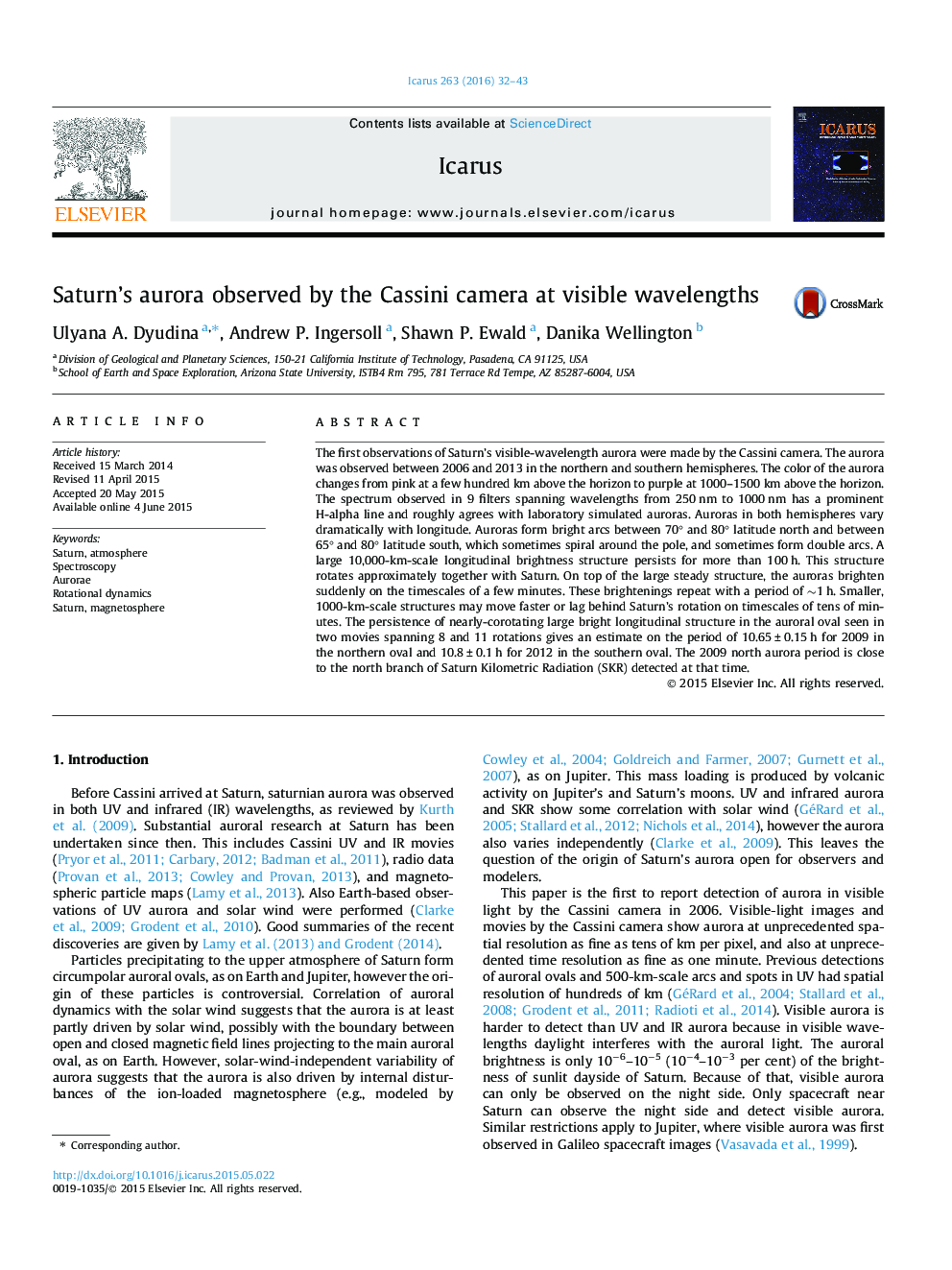| Article ID | Journal | Published Year | Pages | File Type |
|---|---|---|---|---|
| 8135876 | Icarus | 2016 | 12 Pages |
Abstract
The first observations of Saturn's visible-wavelength aurora were made by the Cassini camera. The aurora was observed between 2006 and 2013 in the northern and southern hemispheres. The color of the aurora changes from pink at a few hundred km above the horizon to purple at 1000-1500 km above the horizon. The spectrum observed in 9 filters spanning wavelengths from 250 nm to 1000 nm has a prominent H-alpha line and roughly agrees with laboratory simulated auroras. Auroras in both hemispheres vary dramatically with longitude. Auroras form bright arcs between 70° and 80° latitude north and between 65° and 80° latitude south, which sometimes spiral around the pole, and sometimes form double arcs. A large 10,000-km-scale longitudinal brightness structure persists for more than 100 h. This structure rotates approximately together with Saturn. On top of the large steady structure, the auroras brighten suddenly on the timescales of a few minutes. These brightenings repeat with a period of â¼1 h. Smaller, 1000-km-scale structures may move faster or lag behind Saturn's rotation on timescales of tens of minutes. The persistence of nearly-corotating large bright longitudinal structure in the auroral oval seen in two movies spanning 8 and 11 rotations gives an estimate on the period of 10.65 ± 0.15 h for 2009 in the northern oval and 10.8 ± 0.1 h for 2012 in the southern oval. The 2009 north aurora period is close to the north branch of Saturn Kilometric Radiation (SKR) detected at that time.
Related Topics
Physical Sciences and Engineering
Earth and Planetary Sciences
Space and Planetary Science
Authors
Ulyana A. Dyudina, Andrew P. Ingersoll, Shawn P. Ewald, Danika Wellington,
